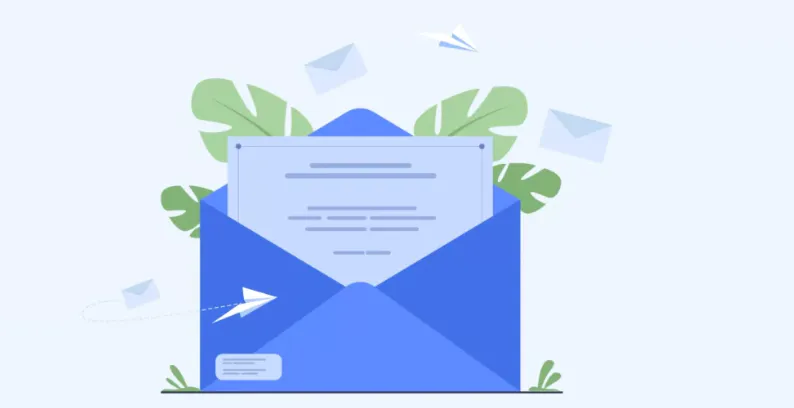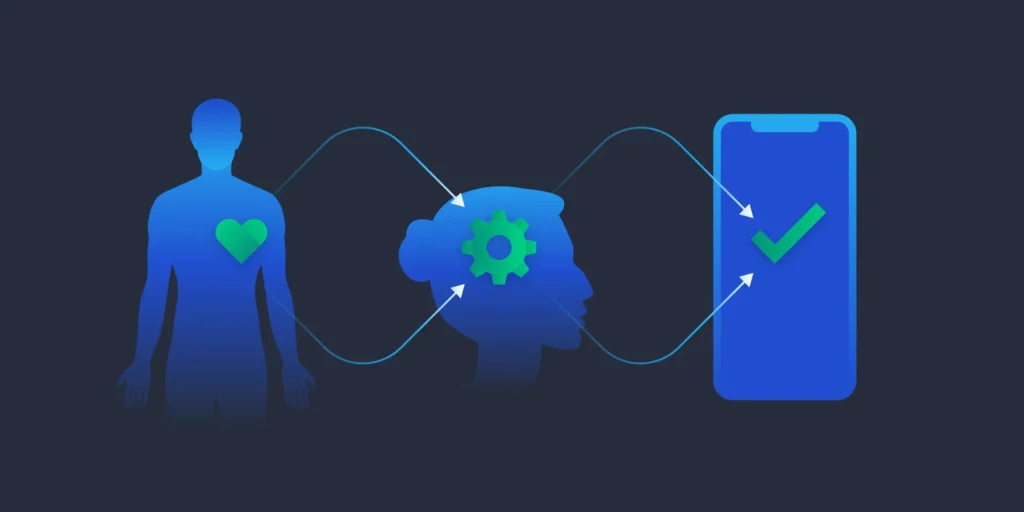How to Write a Cold Email for Idea Validation
As an entrepreneur or business owner, you may have a great idea for a product or service. But how do you know if it’s worth pursuing? This is where idea validation comes in.

Idea validation involves testing and verifying whether your business idea is viable. You do this before investing significant time and resources into it. It helps you identify potential customers and understand their needs and pain points. This way, you refine your product or service to meet those needs.
One effective way to validate your idea is through cold emailing. It involves reaching out to a potential customer or contacts who have no prior relationship with you.
This approach can help you gather feedback and build relationships with prospective customers. It also makes people develop an interest in your product or service.
In this blog post, we will delve into the intricacies of creating persuasive cold emails, drawing inspiration from successful examples, and exploring strategic follow up techniques for any particular industry to make your response rate high.
Ultimately, this approach will empower you to effectively assess the potential of your business idea through cold emailing, enabling you to do personalized research before you send a cold email that makes sense to the right person and pave the way for your offering’s success.
Understanding Your Target Audience
Identifying your ideal audience is essential to crafting a successful cold email campaign. Understanding their needs and concerns is vital. It will help you tailor your cold email to your ideal audience, increasing the chances of a response.
Here are some tips on how to understand and target your ideal audience.
Identify Your Ideal Audience
To identify your ideal audience, start by defining what you sell. Then, determine who would benefit the most from it.

Consider demographics such as age, gender, location, income, and education. Also, think about psychographics such as values, interests, and behaviors.
Once you have identified your ideal audience, you can craft a compelling message.
Understand Their Needs and Pain Points
Understanding your target audience’s needs and worries is crucial to writing effective cold emails. Consider their problems and how what you sell can help solve them.
Address their concerns in the subject line and throughout the body of your email. Use language that speaks to them and shows that you understand their struggles.
Tailor Your Cold Email to Your Ideal Audience
You’ve identified your ideal audience and their needs and concerns. It’s time to tailor your cold email to them. Use an email structure and a subject line that catches their attention and addresses their pain points.
In the body of the email, highlight how what you sell can help them. Use social proof, such as customer reviews, to build trust and credibility. Be sure to include a clear call to action and a way for them to respond.
Crafting a Compelling Subject Line
The subject line is the first thing your customers see when receiving your cold email. It is the most crucial part of your email. It determines whether your prospect opens or sends it straight to the trash.

Therefore, you must ensure your it is attention-grabbing. It must be compelling enough for recipients to read your email.
Importance of the Subject Line
Subject lines are essential because they are your recipients’ first impression of you. It is the deciding factor determining the success of your cold email campaign.
A well-crafted subject line can increase your response rate. It also helps you reach your sales goals. So, it is crucial to spend time crafting the perfect one.
Tips for Writing an Attention-Grabbing Subject Line
Here are some tips to help you write attention-grabbing subject lines:
Keep it short and sweet. Keep it between 3-7 words. It should be short enough to fit on a mobile screen.
Personalize it. Use the recipient’s or company name to make it more personal.
Use social proof. Include a number or statistic that showcases your expertise or social proof.
Ask a question. Ask a question that makes your prospect curious and compels them to open your email.
Create urgency. Use urgent language to make your prospect feel they need to respond immediately.
Examples of Effective Subject Lines
Here are some examples of effective subject lines:
Hey [First Name], I saw your recent post on [Topic] and thought you’d be interested in [Solution].
[Company Name] Needs This Solution to Boost Sales.
5 Steps to [Achieve Specific Goal] for [Ideal Customer].
[Company Name], I have an idea to help [solve a problem specific to their company].
Can I help you with [specific problem]?
Writing a Personalized Greeting
When it comes to cold email outreach, personalization is vital. A personalized greeting can make a huge difference in whether your email gets a response.
Studies reveal that personalized emails have a response rate up to 50% higher than non-personalized ones.
How to Personalize Your Greeting
To personalize your greeting, start by addressing the recipient by their name.
This may sound obvious. But many businesses still send cold emails with generic greetings. Greeting like “Dear Sir/Madam” or “To Whom It May Concern” do not make the recipient feel special.

Take the time to find the recipient’s name on their company website. You can also check their LinkedIn profile or any other source.
Besides using the recipient’s name, you can also personalize your greeting. Mention something specific about them or their company.
For example, mention a recent achievement or project they have worked on. You could also reference a shared interest or connection.
Examples of Personalized Greetings
Here are a few examples of personalized greetings in cold emails:
Hi [Recipient’s Name], I came across your profile and was impressed by your experience in sales. I noticed you recently spoke at a sales conference, and I am reaching out to introduce myself.
Hey [Recipient’s Name], I found out that you specialize in early stage startups. I’m reaching out because I have a product that could help startups like yours.
Hello [Recipient’s Name], I found your email on [Job Board Name]. I noticed you’re a Sales Development Representative at [Company Name]. I am reaching out to see if you are interested in learning more about our sales software.
Introducing Yourself and Your Idea
Your introduction is critical for cold emailing to validate your idea. It builds rapport with prospective customers.
You must make a strong first impression to grab the recipient’s attention. Your impression must be clear, concise, and engaging.

Here are some tips on how to introduce yourself and your idea in a way that resonates with your target audience:
Introduce Yourself in a Cold Email
In a cold email, you need to quickly and effectively introduce yourself. Use a professional, friendly, and helpful tone that humanizes your message.
Mention your name, your position, and your company if relevant. Try to keep your introduction brief and avoid rambling on. Remember, your recipient is probably busy and may only have a little time to read lengthy emails.
Present Your Idea Clearly and Concisely
When presenting your idea, focus on how it solves a particular problem. Remember, it must stand out from existing solutions. Use examples that are specific to your target market to make your point.
Use the recipient’s name to show that you have researched them and their company. Avoid using jargon or buzzwords that might confuse the reader.
Tips for Making a Strong First Impression
To make a strong first impression, personalize your message. Use the recipient’s name and include specific details about their company or industry.
Be polite and helpful, and avoid being overly salesy. Demonstrate your expertise and current solution by providing value in your message. Keep your tone positive and professional.
Follow Up and Respond to Feedback
Remember that follow ups with your recipient and responding to any feedback you receive are vital. Persistence is key when it comes to cold emailing.
Use follow ups to remind the recipient of your original message. Listen carefully to feedback and use it to refine your message.
Explaining the Benefits of Your Idea
When writing a cold email for idea validation, it’s crucial to emphasize the benefits of your idea to the recipient.
Sales managers often receive numerous cold emails, so you must make yours stand out. A well-crafted cold email template will help you convey the advantages of your idea concisely and compellingly, increasing the likelihood of a positive response.
To ensure your cold email is effective, focus on the benefits your idea will bring to the prospect’s inbox. For example, highlight these points in your cold email if your idea can save their business time and money.
You should also mention how your idea can help streamline their sales funnel or enhance their customer experience.
Using Persuasive Language to Convince the Reader
The language you use in your cold email is critical to persuading the recipient to consider your idea.

While cold calling may have its place in sales, sending cold emails allows you to craft a thoughtful, personalized message that appeals to your audience.
Use persuasive language in your cold email template that appeals to the reader’s emotions and logic. For instance, instead of stating that your idea will improve their sales process, explain how it will help them achieve their sales targets more efficiently and increase their revenue.
This approach makes it easier for the recipient to visualize the impact your idea could have on their business.
Examples of Benefit-Focused Language
Here are some examples of benefit-focused language you can incorporate into your cold email templates to make your pitch more compelling:
- “Our solution can help you reduce customer acquisition costs by up to 30%.”
- “By implementing our idea, you can increase your lead conversion rate by 25%.”
- “Our innovative approach has been proven to boost sales team productivity by 15%.”
Addressing Potential Concerns
When crafting cold emails to validate your idea, you must expect your recipients’ potential concerns or objections. You must also address them well.
This shows empathy, helping you connect with your reader more deeply. This section will discuss how to use empathy in your cold email template. We’ll also provide examples of addressing concerns in your email outreach.
Anticipating and Addressing Concerns in Cold Emails
You must anticipate your recipients’ concerns to create effective cold email templates.
For example, they might worry about the legitimacy of your offering, time investment, or your company’s credibility.
Addressing these concerns in your cold call or email makes it easier for them to trust you.
For instance, suppose you’re reaching out to prospective customers to validate your product. Here, you can provide a brief company background. Explain why you’re interested in their opinion and assure them you value their input.
Using Empathy to Connect with Your Reader
Empathy is powerful for connecting with your reader in cold emails. It shows that you understand their perspective and genuinely care about their needs.

To demonstrate empathy, focus on the specific person you’re contacting and a potential pain point. This could involve acknowledging their busy schedule. You could also offer to accommodate their preferred modes of communication, such as phone or email.
For example, you could write: “I understand that as a business owner, your time is precious. That’s why I’ve summarized my proposal in just three key points. This allows you to quickly assess its relevance to your company.”
Examples of Addressing Concerns in Cold Emails
Let’s explore some examples of addressing potential concerns in your cold email templates.
1. Concern: Time commitment – “I know you must be swamped, so I’ll keep this brief. I’d love just 10 minutes of your time to discuss [your idea].”
2. Concern: Privacy – “We value your privacy and promise not to share your personal information. We won’t spam your inbox with unnecessary messages.”
3. Concern: Relevance – “I’ve researched your company. I believe our solution aligns with your current goals and challenges. Here’s a quick overview of how it could benefit your business.“
Including a CTA
A crucial aspect of writing a cold email for idea validation is to include a call-to-action (CTA). The CTA is the point where you prompt the recipient to take a specific action. This can be replying to your email or scheduling a call.
Importance of a CTAs
Most people overlook the significance of a CTA in their cold email template. However, your cold outreach aims to get the person you’re contacting to take a specific action.
Without a clear CTA, your recipient might be interested in helping you but may not know how to do that. So, include a CTA in your sales emails. It also increases the chance of receiving responses. This way, you turn potential leads into customers.
Tips for Writing an Effective CTAs
When composing a CTA, ensure it’s concise, easy to understand, and tailored to your audience. Mention the action you want them to take and, if possible, make it simple for them to do so.
For example, if you ask them to schedule a call, provide a link to your calendar. Here are some tips for crafting a compelling CTA:
1. Be specific: Clearly state what you want the recipient to do and how it will benefit them.
2. Keep it short: A lengthy CTA can be overwhelming, so keep it to a sentence or two.
3. Create a sense of urgency: Encourage the person to act promptly. So, emphasize the time-sensitive nature of your request or offer.
Examples of Strong CTAs
To help you grasp the concept, here are example words of powerful CTAs you can use in your cold email template:
- “If you’re interested in learning more about our solution, please reply to this email. I’ll send you more information.”
- Are you open to a 15-minute phone call next week to discuss how our product can benefit your company? Click here to schedule a time that works best for you.”
- “Do you think our services might fit your needs well? Please send a follow up email to let me know, and we can schedule a call to chat further.”
Formatting and Proofreading Your Cold Email
One crucial point in writing a cold email is ensuring it’s well formatted. The person you’re contacting is likely busy with their own network, so a clear, concise email is crucial.
Use white space and bullet points to break your content into digestible sections. This makes your email more readable and easier for the leads to scan. Avoid long paragraphs, and ensure your text is visually appealing.
Benefits of Good Formatting in Emails
When you take the time to format your cold email, you increase the chances that the person will read it and consider what you’re selling. Companies or potential leads are likelier to engage with you if your email is easily read and understood.

Good formatting also helps to show that you are a professional and are interested in the needs of your leads.
Importance of Proofreading and Editing Your Cold Email
It’s essential to proofread and edit your cold email before sending it out. Errors in your email can give the wrong impression about what you are selling. They hinder your chances of forming a connection with the contact.
Tips for Catching Errors and Improving Readability
To catch errors and improve the readability of your cold email, follow these tips:
- Read your email out loud. This shows you awkward phrasing, wrong word choices, and missing punctuation.
- Put yourself in the recipient’s shoes. Consider whether your email is clear and concise from their perspective.
- Use the same level of language. Match the tone and language style of the person you’re contacting.
Tools for Proofreading and Editing
Various tools are available to help you proofread and edit your cold email. These include Grammarly and Hemingway. These tools can catch errors and provide suggestions for improving your text.
Also, ask a contact of yours to review your email before sending it.
Conclusion
As an entrepreneur, validating your business ideas is crucial. You must do this before investing significant time and resources. One effective way to achieve this is through a cold email. You can also place a phone call to the contact, but emailing is better. This method allows you to gather feedback and forge relationships with companies.
To succeed, craft attention-grabbing subject lines and personalize greetings. Also, address your target audience’s needs.
Job boards and company websites can provide valuable information about your ideal audience. They allow you to tailor your cold email effectively. Understanding the needs of potential leads is crucial. It lets you create compelling content that engages and converts customers.
Phone calls may also be necessary for further discussions with some companies. But start with a well-crafted cold email. It can lay the foundation for successful communication.
Good formatting, proofreading, and editing are essential. They are part of the process of emailing companies and potential leads. Ensure your message is visually appealing, error-free, and easy to read. This increases your chances of forming a connection with your contacts.
With persistence and the right approach, sending an email can be a powerful tool for validating your business ideas and unlocking new customers and leads.


